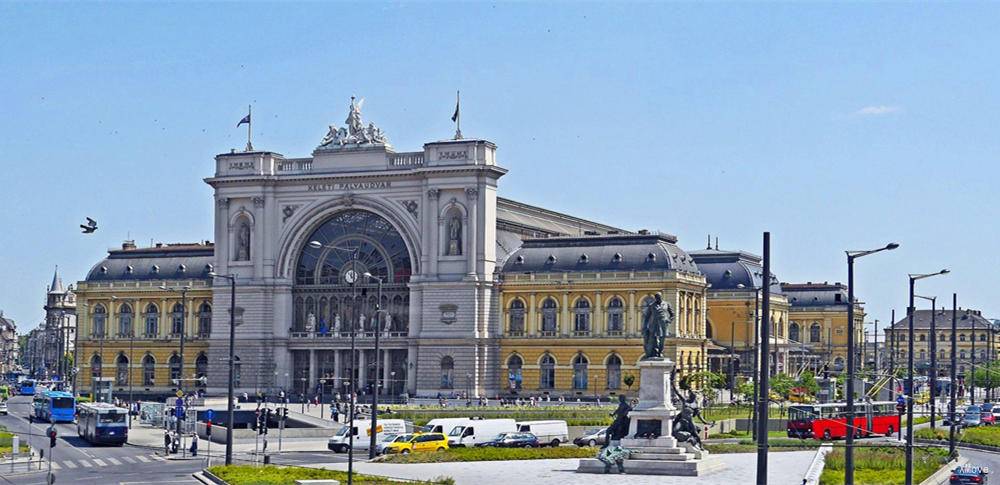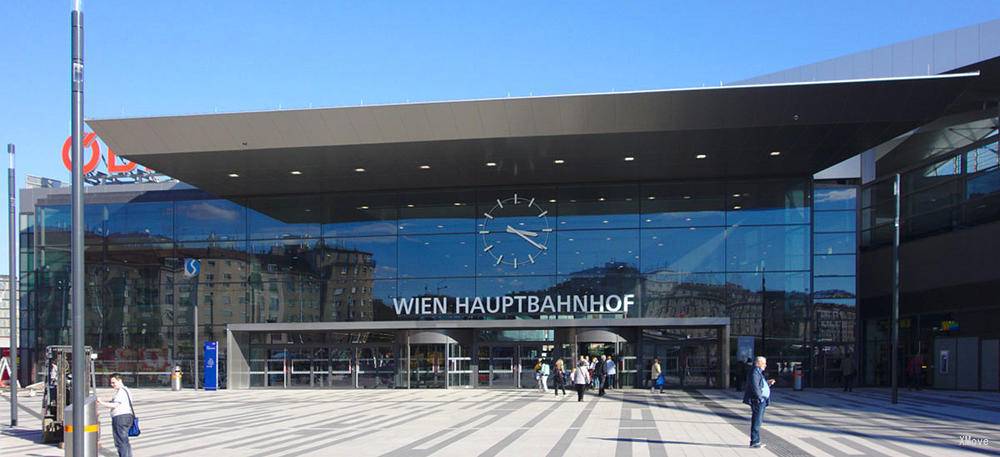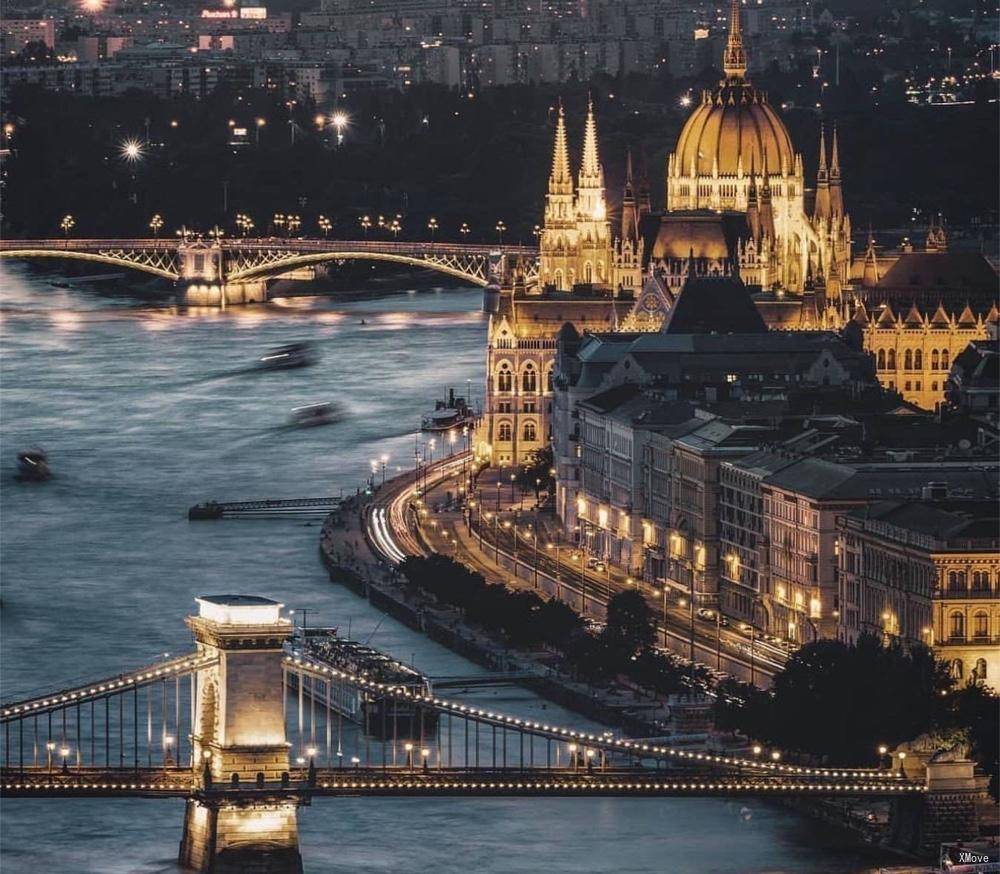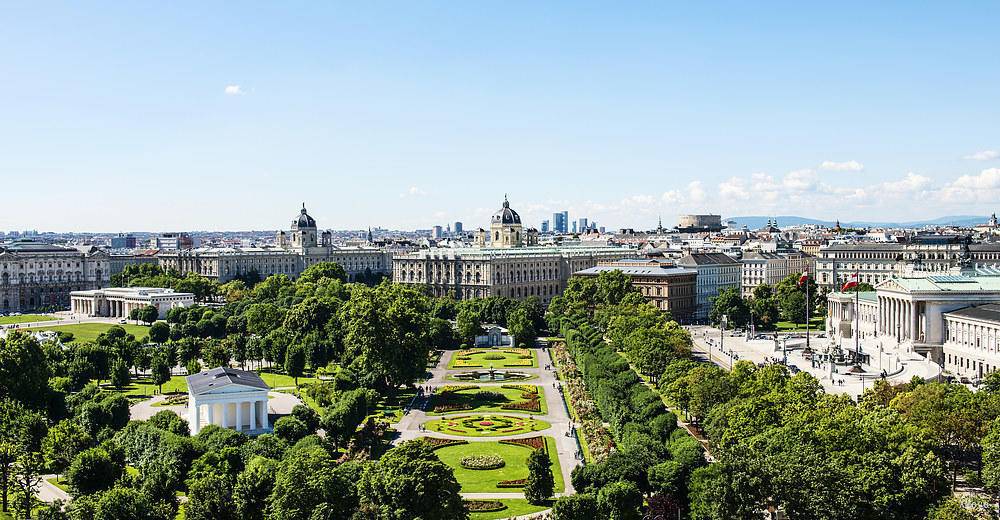Budapest Central to Vienna Central Station: Trains, Buses, Fares, Today's Connections, Routes, Duration, Types of Trains, Station Guides, Tips, Journey
Hungary Train Tickets
Scan QR code, download App to see Budapest Central's more live update, station guide, plan and photos



Train schedule Budapest Central(Budapest Keleti Pályaudva) to Vienna Central Station(Wien Hbf)
Popular train routes departing from Budapest Central(Budapest Keleti Pályaudva)
* Split
* Belgrade(Beograd)
* Salzburg Central(Salzburg Hbf)
* Florence(Firenze)
* Bratislava
* Prague Central(Praha Hlavní Nádraží (Prag Hl. N.))
* Venice Mestre(Venezia Mestre)
Popular train routes arriving in Budapest Central(Budapest Keleti Pályaudva)
* Cracóvia Głowny(Kraków Główny)
* Praha Hlavní Nádraží (Prag Hl. N.)
* Estação Principal De Linz(Linz Hbf)
* Belgrado(Beograd)
* Split
* Zupanja
* Estação Ferroviária Norte Bucareste B (Basarab, Bucareste)(Bucuresti Nord Gara B (Basarab,Bucharest))
Popular train routes departing from Vienna Central Station(Wien Hbf)
* Brunn Maria Enzersdorf
* Zagreb Glavni Kolodvor(Zagreb Glavni Kolod.)
* Belgrade(Beograd)
* Vienna Stubentor (U3)(Wien Stubentor (U3))
* Vienna Westbahnhof (Gerstnerstraße)(Wien Westbahnhof (Gerstnerstraße))
* Vienna Central Station(Wien Hbf)
* Split
Popular train routes arriving in Vienna Central Station(Wien Hbf)
* 威尼斯 圣露西亚中央火车站(Venezia Santa Lucia)
* 米兰中央火车站(Milano Centrale)
* 佛罗伦萨新圣母玛利亚中央火车站(Firenze Santa Maria Novella, Smn)
* 苏黎世hb(Zürich Hb)
* 布达佩斯(Budapest)
* 路德维希港中央火车站(Ludwigshafen(Rh)Hbf)
* 维罗纳新门(Verona Porta Nuova)

Budapest Central
The train connects Budapest with all the central and eastern countries of Europe. Unless otherwise indicated, all trains will arrive at Budapest Keleti pályaudva, so if you arrive in Budapest by train, you should get off at East Railway Station. All international trains depart from the Keleti station, and domestic trains to Miskolc, Eger, Győr and Szombathely also depart from here.
You can choose to take the M2 line and get off at the Keleti pályaudvar stop. The starting point of Metro Line 4, the subway M2 and M4 meet here.
Budapest Central - Station Guide | Departures and Arrivals | Popular RoutesVienna Central Station
Vienna's largest railway station: the central railway station (Wien Hauptbahnhof). The line is mainly connected to Eastern Europe, Slovakia, Hungary, Poland, Bulgaria and other places as well as Stuttgart, Paris, Venice, Athens and other cities in Western Europe.
Vienna Central Station - Station Guide | Departures and Arrivals | Popular Routes

Budapest (, Hungarian pronunciation: [ˈbudɒpɛʃt]) is the capital and the most populous city of Hungary, and the tenth-largest city in the European Union by population within city limits. The city has an estimated population of 1,752,286 over a land area of about 525 square kilometres (203 square miles). Budapest is both a city and county, and forms the centre of the Budapest metropolitan area, which has an area of 7,626 square kilometres (2,944 square miles) and a population of 3,303,786, comprising 33% of the population of Hungary.The history of Budapest began when an early Celtic settlement transformed into the Roman town of Aquincum, the capital of Lower Pannonia. The Hungarians arrived in the territory in the late 9th century. The area was pillaged by the Mongols in 1241. Buda, the settlements on the west bank of the river, became one of the centres of Renaissance humanist culture by the 15th century. The Battle of Mohács, in 1526, was followed by nearly 150 years of Ottoman rule. After the reconquest of Buda in 1686, the region entered a new age of prosperity. Pest-Buda became a global city with the unification of Buda, Óbuda, and Pest on 17 November 1873, with the name 'Budapest' given to the new capital. Budapest also became the co-capital of the Austro-Hungarian Empire, a great power that dissolved in 1918, following World War I. The city was the focal point of the Hungarian Revolution of 1848, the Battle of Budapest in 1945, and the Hungarian Revolution of 1956.Budapest is an Alpha − global city with strengths in commerce, finance, media, art, fashion, research, technology, education, and entertainment. It is Hungary's financial centre and was ranked as the second fastest-developing urban economy in Europe. Budapest is the headquarters of the European Institute of Innovation and Technology, the European Police College and the first foreign office of the China Investment Promotion Agency. Over 40 colleges and universities are located in Budapest, including the Eötvös Loránd University, the Semmelweis University and the Budapest University of Technology and Economics. Opened in 1896, the city's subway system, the Budapest Metro, serves 1.27 million, while the Budapest Tram Network serves 1.08 million passengers daily.Among Budapest's important museums and cultural institutions is the Museum of Fine Arts. Further famous cultural institutions are the Hungarian National Museum, House of Terror, Franz Liszt Academy of Music, Hungarian State Opera House and National Széchényi Library. The central area of the city along the Danube River is classified as a UNESCO World Heritage Site and has several notable monuments, including the Hungarian Parliament, Buda Castle, Fisherman's Bastion, Gresham Palace, Széchenyi Chain Bridge, Matthias Church and the Liberty Statue. Other famous landmarks include Andrássy Avenue, St. Stephen's Basilica, Heroes' Square, the Great Market Hall, the Nyugati Railway Station built by the Eiffel Company of Paris in 1877 and the second-oldest metro line in the world, the Millennium Underground Railway. The city also has around 80 geothermal springs, the largest thermal water cave system, second largest synagogue, and third largest Parliament building in the world. Budapest attracts 4.4 million international tourists per year, making it a popular destination in Europe.
Budapest - Guide, Attractions, Tours, Sightseeings | Train from/to Budapest | Popular RoutesVienna ( ; German: Wien [viːn] ) is the national capital, largest city, and one of nine states of Austria. Vienna is Austria's primate city, with a population of about 1.9 million (2.6 million within the metropolitan area, nearly one third of the country's population), and its cultural, economic, and political centre. It is the 7th-largest city by population within city limits in the European Union. Until the beginning of the 20th century, it was the largest German-speaking city in the world, and before the splitting of the Austro-Hungarian Empire in World War I, the city had 2 million inhabitants. Today it is the second largest German-speaking city after Berlin and just before Hamburg. Vienna is host to many major international organizations, including the United Nations, OPEC, and the OSCE. The city is located in the eastern part of Austria and is close to the borders of Czechia, Slovakia, and Hungary. These regions work together in a European Centrope border region. Along with nearby Bratislava, Vienna forms a metropolitan region with 3 million inhabitants. In 2001, the city centre was designated a UNESCO World Heritage Site. In July 2017 it was moved to the list of World Heritage in Danger.Additionally to being labeled the "City of Music" due to its musical legacy, Vienna is also said to be the "City of Dreams", because of it being home to the world's first psychoanalyst Sigmund Freud. Vienna's ancestral roots lie in early Celtic and Roman settlements that transformed into a Medieval and Baroque city. It is well known for having played a pivotal role as a leading European music centre, from the age of Viennese Classicism through the early part of the 20th century. The historic centre of Vienna is rich in architectural ensembles, including Baroque palaces and gardens, and the late-19th-century Ringstraße lined with grand buildings, monuments and parks.Vienna is known for its high quality of life. In a 2005 study of 127 world cities, the Economist Intelligence Unit ranked the city first (in a tie with Vancouver and San Francisco) for the world's most liveable cities. Between 2011 and 2015, Vienna was ranked second, behind Melbourne. In 2018, it replaced Melbourne as the number one spot and continued as the first in 2019. For ten consecutive years (2009–2019), the human-resource-consulting firm Mercer ranked Vienna first in its annual "Quality of Living" survey of hundreds of cities around the world. Monocle's 2015 "Quality of Life Survey" ranked Vienna second on a list of the top 25 cities in the world "to make a base within."The UN-Habitat classified Vienna as the most prosperous city in the world in 2012/2013. The city was ranked 1st globally for its culture of innovation in 2007 and 2008, and sixth globally (out of 256 cities) in the 2014 Innovation Cities Index, which analyzed 162 indicators in covering three areas: culture, infrastructure, and markets. Vienna regularly hosts urban planning conferences and is often used as a case study by urban planners.Between 2005 and 2010, Vienna was the world's number-one destination for international congresses and conventions. It attracts over 6.8 million tourists a year.
Vienna - Guide, Attractions, Tours, Sightseeings | Train from/to Vienna | Popular Routes
Hungary Train Tickets
Scan QR code, download App to see Budapest Central's more live update, station guide, plan and photos



Hot Journeys
* Nice -> Milan
* Madrid(Madrid) -> Barcelona
* Rome(Roma) -> Florence
* Oxford -> London(London)
* Florence -> Milan
* Barcelona -> Madrid(Madrid)
* Paris -> Frankfurt
* Moscow(Москва) -> St. Petersburg(санкт петербург)
* Seoul(서울) -> Busan(부산)
* Stuttgart -> Frankfurt
* Barcelona -> Madrid(Madrid)
* Milan -> Florence
* Frankfurt -> Munich(Müchen)
* Venice(Venezia) -> Bologna
* Strasbourg -> Paris
* Milan -> Venice(Venezia)
* Munich(Müchen) -> Frankfurt
* Venice(Venezia) -> Milan
* Rome(Roma) -> Florence
* Helsinki(Helsinki) -> Rovaniemi(Rovaniemi)
* Paris -> Marseilles(Marseille)
* Munich(Müchen) -> Berlin(Berlin)
* Paris -> Venice(Venezia)
* Manarola -> La Spezia(La Spezia)
* Seoul(서울) -> Jeonju Si(전주시)
* Bratislava(Bratislava) -> Warsaw(Warszawa)
* Paris -> Avignon
